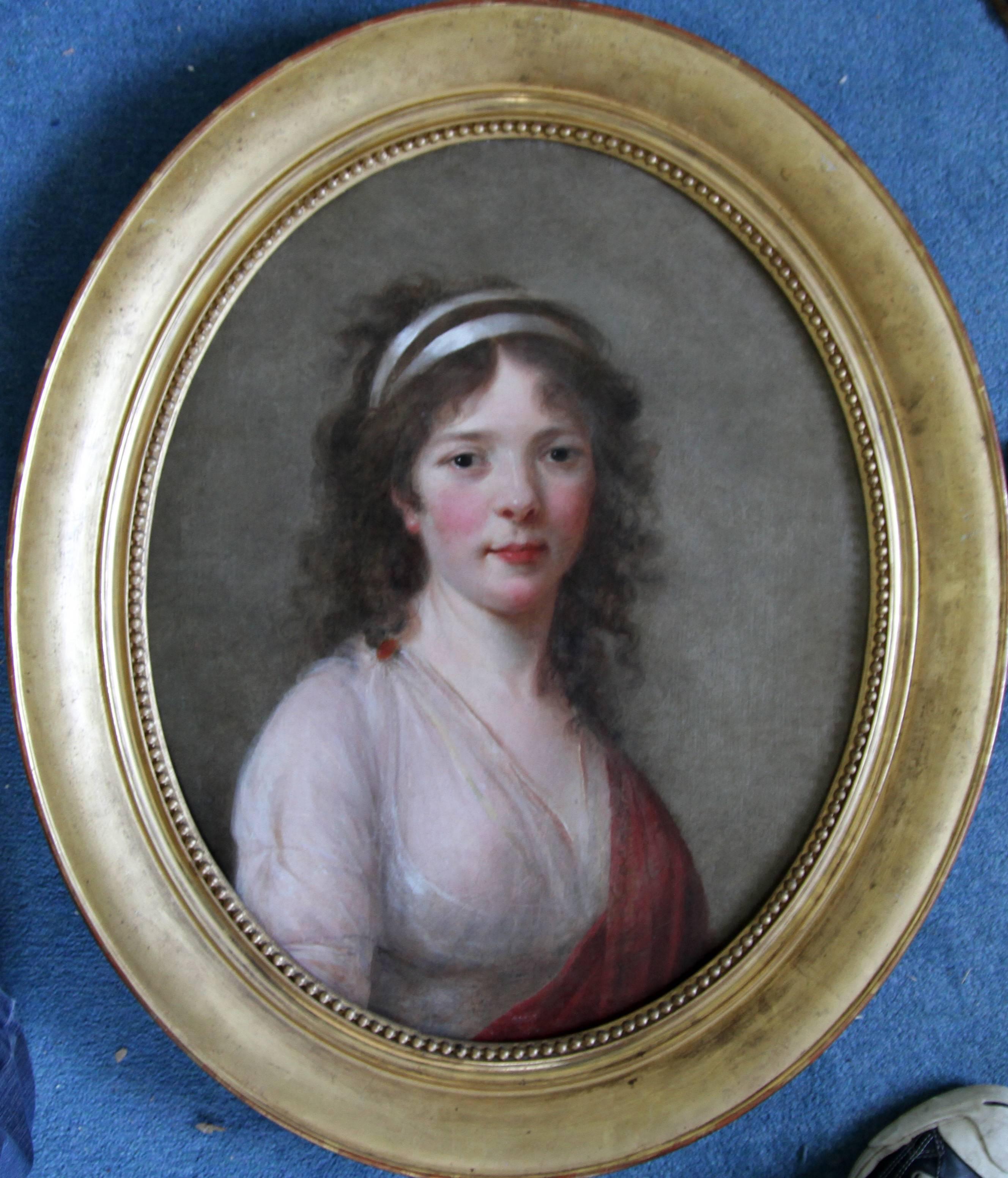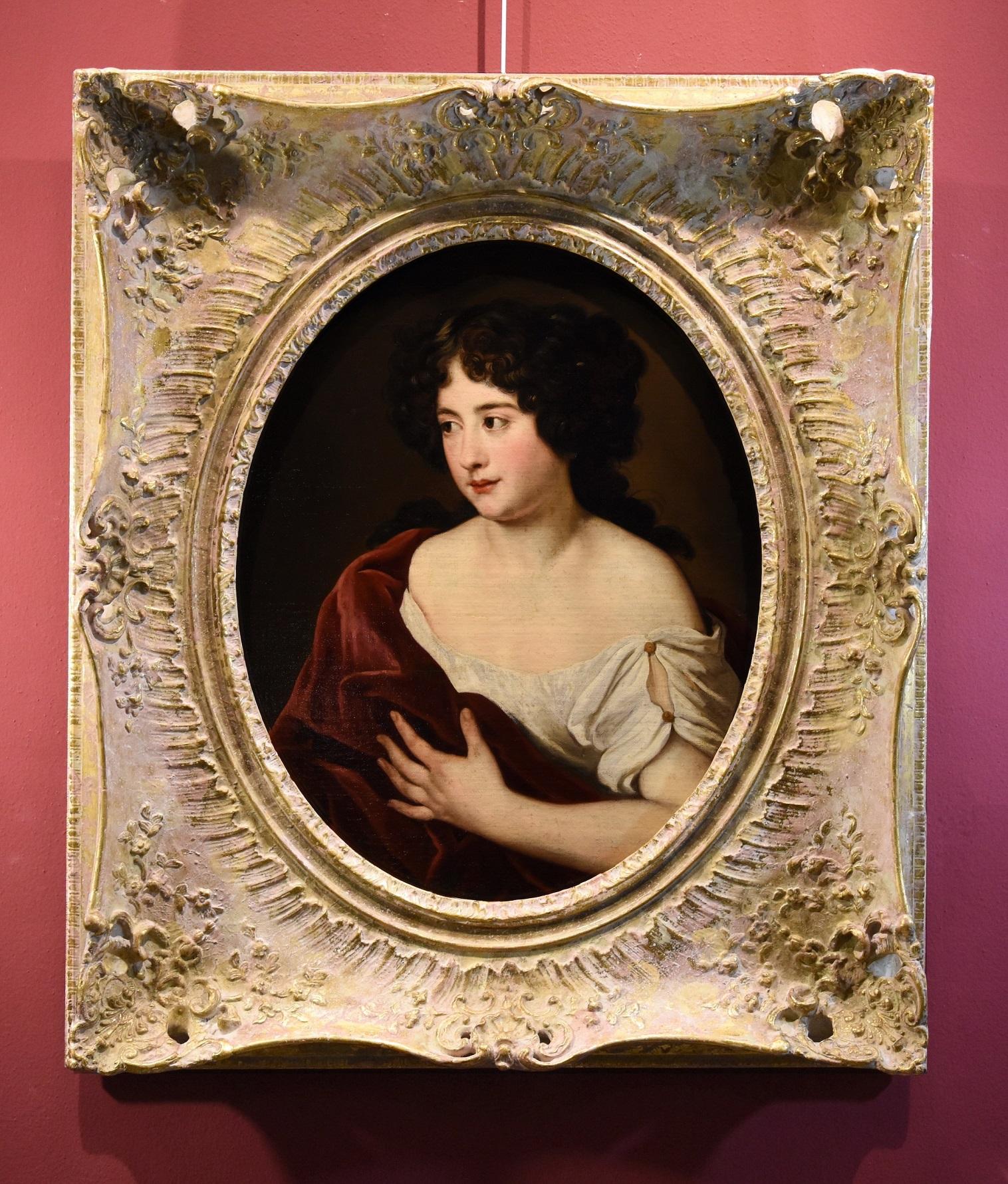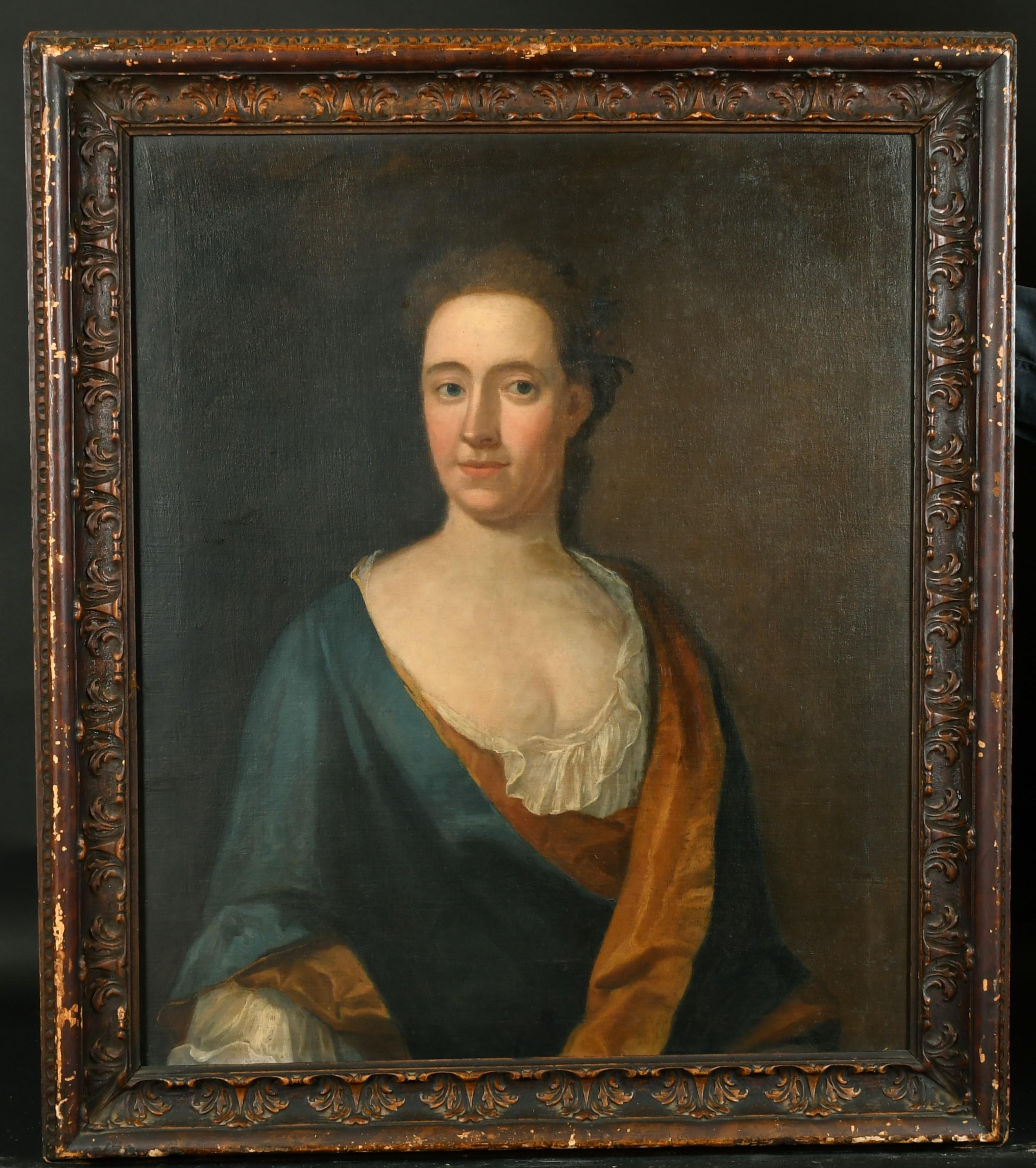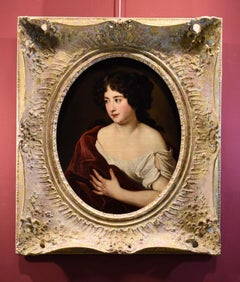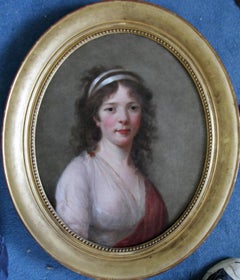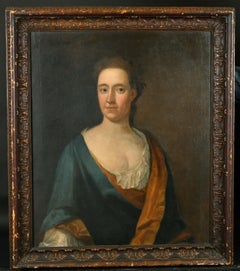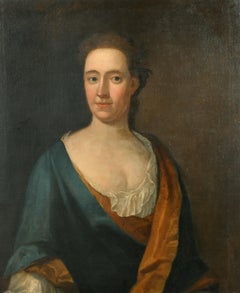Items Similar to Perroneau Portrait Lady Woman Paint Oil on canvas 18th Century Old master French
Want more images or videos?
Request additional images or videos from the seller
1 of 13
Perroneau Portrait Lady Woman Paint Oil on canvas 18th Century Old master French1730-1770
1730-1770
$11,837.66
$14,797.0720% Off
£8,812.37
£11,015.4620% Off
€9,880
€12,35020% Off
CA$16,214.63
CA$20,268.2920% Off
A$18,034.21
A$22,542.7620% Off
CHF 9,416.90
CHF 11,771.1320% Off
MX$219,457.17
MX$274,321.4620% Off
NOK 120,268.24
NOK 150,335.3020% Off
SEK 112,790.39
SEK 140,987.9920% Off
DKK 75,212.99
DKK 94,016.2420% Off
Shipping
Retrieving quote...The 1stDibs Promise:
Authenticity Guarantee,
Money-Back Guarantee,
24-Hour Cancellation
About the Item
Jean-Baptiste Perroneau
(Paris, 1715 – Amsterdam, 1783)
Portrait of a lady
Oil on oval canvas
60 x 50 cm. - In frame 77 x 66 cm.
Work accompanied by expertise: Raffaelle Colace (Cremona), Ferdinando Arisi
Reference bibliography: d’Arnoult, Dominique (2014) Jean-Baptiste Perronneau, c 1715-1783, un portraitiste dans l’Europe des Lumières
Excerpt from the expertise of Dr. Colace:
This refined portrait of a lady is a perfect example of the style of Jean-Baptiste Perroneau, a very talented French painter, whose most beautiful works are located, just like this one, between the fifth and sixth decades of the eighteenth century.
"Perroneaeu is more naturally colored than La Tour, the est, in the peinture de poussière colorée, tout plein de tons clairs, frais, presque humides": this is how his brothers wrote about him in La Maison d'un Artiste (1880). Edmond and Jules de Goncourt, who recognized in Perroneau's art points of contact with Joshua Reynolds (1723-1792) and in general with English portraiture of the second half of the eighteenth century (see D. Wakefield, French, Eighteenth-Century painting , London 1984, pp. 79-80).
Compared to the magniloquence in the presentation of the characters and the technical virtuosity of the French ones, Perroneau's portraits are in fact distinguished by a certain sobriety and a less artificial pictorialism as can be seen in the magnificent Portrait of Daniel Jousse preserved in the Musée des Beaux-Arts of Orléans (Fig.1) or in that of Madame Chevoter (Fig.2) from 1751, also in Orléans, executed in pastel - a technique that the painter favored from the middle of the century (both illustrated in French Painting, edited by Pierre Rosenberg, Milan 1999, II, p. 502, figures 487, 488).
The vague note of melancholy that can be read on Madame Chevotet's face reflects the sentimental and wandering character of the painter who almost always endows his subjects with intelligence, sensitivity, and something remote in the expression, as the distant gaze also tells us of our lady.
Beyond the rendering of the character, in this beautiful portrait it is worth underlining the pictorial harmony of the soft colors and the clear light that caresses the rosy face and affects the pearl of the clip in the dark colored hair which, in its foamy rendering and evanescent, they are diluted in the delicately shaded background, while fluid and loose brushstrokes describe the wide neckline of the dress with a white rose in the centre.
The colors are those of the 'muted' palette typical of Perroneau, usually played on beige, brown, olive-green, blue and white tones spread through soft and interrupted brushstrokes on a neutral background with a result of natural delicacy, far from the artificial and by the pictorial resolve of a Nattier.
The value and charm of the portraits of the French artist lie precisely in the simple and inconspicuous character and it is not surprising that from the mid-eighteenth century he dedicated himself to the more discreet pastel technique, in keeping with his feelings.
For example, in addition to the one already mentioned of Madame Chevotet, the beautiful Portrait of a Girl with a Kitten (Fig.3), from 1743, preserved in the National Gallery in London, is in pastel. Preserved in the Louvre, however, is the famous Portrait of Madame de Sorquainville (Fig.4), in oil, dated 1749, which certainly constitutes one of the greatest achievements of Perroneaut's art (ill. in Wakefield 1984, op. cit., p . 70, fig. 82). Then we can mention the portrait of Magdaleine Pinceloup de la Grange (Fig.5), from 1747, now preserved at the Getty Museum in Los Angeles.
The painting is sold complete with a pleasant gilded wooden frame and is accompanied by a certificate of authenticity and descriptive iconographic card.
We take care of and organize the transport of the purchased works, both for Italy and abroad, through professional and insured carriers.
If you have the desire to see this or other works in person, we will be happy to welcome you to our new gallery in Riva del Garda, in Viale Giuseppe Canella 18. We are waiting for you!
Contact us for any information or to organize a visit, we will be happy to answer you.
galleriacastelbarco/
- Attributed to:Jean-baptiste Perroneau (paris, 1715 – Amsterdam, 1783)
- Creation Year:1730-1770
- Dimensions:Height: 30.32 in (77 cm)Width: 25.2 in (64 cm)
- Medium:
- Movement & Style:
- Period:
- Condition:
- Gallery Location:Riva del Garda, IT
- Reference Number:1stDibs: LU988113999692
About the Seller
4.9
Platinum Seller
Premium sellers with a 4.7+ rating and 24-hour response times
Established in 2017
1stDibs seller since 2018
255 sales on 1stDibs
Typical response time: <1 hour
- ShippingRetrieving quote...Shipping from: Riva del Garda, Italy
- Return Policy
Authenticity Guarantee
In the unlikely event there’s an issue with an item’s authenticity, contact us within 1 year for a full refund. DetailsMoney-Back Guarantee
If your item is not as described, is damaged in transit, or does not arrive, contact us within 7 days for a full refund. Details24-Hour Cancellation
You have a 24-hour grace period in which to reconsider your purchase, with no questions asked.Vetted Professional Sellers
Our world-class sellers must adhere to strict standards for service and quality, maintaining the integrity of our listings.Price-Match Guarantee
If you find that a seller listed the same item for a lower price elsewhere, we’ll match it.Trusted Global Delivery
Our best-in-class carrier network provides specialized shipping options worldwide, including custom delivery.More From This Seller
View AllPortrait Woman Parodi 17/18th Century Oil on canvas Old master
By Domenico Parodi (Genoa, 1672 - 1742)
Located in Riva del Garda, IT
Domenico Parodi (Genoa, 1672 - 1742)
Portrait of Anne Marie d'Orléans (Château de Saint-Cloud, 27 August 1669 - Turin, 26 August 1728), first queen consort of Sardinia and maternal g...
Category
18th Century Old Masters Paintings
Materials
Oil
$6,105 Sale Price
20% Off
Portrait Marianne Cogny De Troy Paint Oil on canvas 17/18th Century Old master
Located in Riva del Garda, IT
Workshop/Circle of François de Troy (Toulouse 1645 – Paris 1730)
Portrait of a young lady (probably Marianne de Cogny, epouse de Philippe-Emmanuel de Beaufort...
Category
18th Century Old Masters Paintings
Materials
Oil
$9,594 Sale Price
20% Off
Portrait Noble Woman Ranc Paint Oil on canvas 17/18th Century Old master France
Located in Riva del Garda, IT
Portrait of a noblewoman in ceremonial dress with Chantilly lace mantilla
Attributed to Jean Ranc (Montpellier 1674 - 1735 Madrid)
oil on oval canvas
cm.72 ...
Category
18th Century Old Masters Paintings
Materials
Oil
$5,482 Sale Price
20% Off
Portrait Lady Woman Voet Paint Oil on canvas Old master 17th Century Italian Art
By Jacob Ferdinand Voet (Antwerp 1639 - Paris 1689)
Located in Riva del Garda, IT
Jacob Ferdinand Voet (Antwerp 1639 - Paris 1689) Atelier
Portrait of the Young Ortensia Mancini, Duchess of La Meilleraye (Rome 1646 - Chelsea 1699)
Oil on canvas
75 x 61 cm. - exquisite gilded and lacquered wooden double frame 105 x 91 cm.
The beautiful painting depicting the young and attractive Duchess Ortensia Mancini is part of the refined portraiture of Jacob Ferdinand Voet (Antwerp 1639 - Paris 1689). Of Flemish origin, the painter achieved great success with the aristocratic families of Rome - where he stayed from 1663 to 1679 - thanks to the famous series of portraits commissioned by Cardinal Flavio Chigi, depicting the most enchanting women of the time, and now housed in the Palazzo Chigi in Ariccia.
The paintings became so popular that the artist was repeatedly asked to reproduce replicas and similar versions of them: the 'cabinet des dames' was thus one of the Roman fashions of the 17th century, justifying the large number of female portraits attributable to his workshop that gravitated on the market.
Voet flaunted in his portraits a peculiar softness and grace in the rendering of the complexions, a subtle voluptuousness in the description of the lips, entrusted to small brushstrokes of red, a sense of calm fixity in the pose, all characteristics that are immediately reflected in the work under examination.
Our young effigy, Hortense Mancini...
Category
17th Century Old Masters Paintings
Materials
Oil
$10,716 Sale Price
20% Off
Portrait Woman Knapton Paint Oil on canvas 18th Century Old master English Art
Located in Riva del Garda, IT
George Knapton (London 1698 - 1778), attributable
Portrait of a young aristocratic maiden sitting by a fountain in a garden in the company of a lamb
Oil on canvas (127 x 102 cm - Fr...
Category
18th Century Old Masters Paintings
Materials
Oil
$17,444 Sale Price
20% Off
Portrait Mignard Paint Oil on canvsa Old master 17th Century French Lady Woman
Located in Riva del Garda, IT
Pierre Mignard, known as Le Romain (Troyes 1612 - Paris 1695), attributed
Portrait of 'Louise Renée de Penancoët de Keroualle, Duchess of Portsmouth and Aubigny (Brest 1649 - Paris 1734) as MADDALENA
Oil on canvas
97 x 88 cm
In an important gilded frame 132 x 122 cm.
Provenance: Private collection, Naples
The young and attractive noblewoman portrayed in this painting is Louis Renée de Penancoet de Keroualle, Duchess of Portsmouth and Aubigny (Brest 1649 - Paris 1734), known to have been King Charles II's favourite mistress for over fifteen years, from whose relationship Charles Lennox, 1st Duke of Richmond, was born, but above all to have gone down in history as one of Louis XIV's French informants at the English court.
The duchess was a very influential figure at court, promoting French interests and often acting as an intermediary between the king, his ministers and French ambassadors.
After the death of Charles II this influence quickly came to an end, forcing her to hastily leave London and renounce all her possessions to return to her homeland, between Aubigny-sur-Nère and Paris, where she died in 1734, always remaining in the sovereign's good graces.
The peculiarity of the portrait, probably executed after her return to her homeland, is that the noblewoman takes the form of a charming Mary Magdalene, depicted here following her renunciation of earthly possessions, her rich robes and jewellery, in order to aspire to heavenly riches; We see her immortalised with her long hair loose on one breast, her intriguing but serene gaze directed at the observer, as she rests her crossed hands, as if in prayer, on the ampulla of perfumed ointments and the open book, both iconographic symbols.
The custom of being portrayed in the guise of Magdalene was in vogue for powerful women of the great European courts as early as the 16th century, as it represented the most appropriate image to justify the union of female power and virtue. It must be said that court culture exalted only the positive characteristics of her personality, glossing over or downplaying all references to her sinful past and dissolute life.
The work, whose style fits perfectly into 17th century French portraiture, suggests the pertinent attribution to the Baroque painter Pierre Mignard (Troyes, 1612 - Paris, 1695), whose works were highly praised and earned him a great reputation as a portrait painter for the demanding Parisian aristocracy at the time of Louis XIV, and who portrayed the Duchess de Kérouaille on numerous occasions.
His first important artistic training took place in Simon Vouet's studio, and he then moved to Italy for over twenty years before returning to Paris, blending his own with the influence of Roman classicism.
The elegant looseness of touch and sensual refinement typical of Mignard, combined with a very accurate chiaroscuro rendering, inherited from his artistic training in Rome (which he looked up to the examples of Ferdinad Voet), and the exceptional sweetness of the drawing, the floridity of the complexion and the almost enamelled surfaces, and finally, the peculiar pose of the figure portrayed (the beauty of the two intertwined hands...
Category
17th Century Old Masters Paintings
Materials
Oil
$12,756 Sale Price
30% Off
You May Also Like
Portrait of Madam van Robais - French Old Master oil painting 18th century art
Located in London, GB
This fine French Old Master portrait oil painting on canvas dates to circa 1770 and is attributed to the circle of Elizabeth Vigee Le Brun. The sitter is Madam van Robais.
The van R...
Category
18th Century Old Masters Portrait Paintings
Materials
Oil
$20,278 Sale Price
20% Off
Fine 18th Century British Portrait of an Aristocratic Lady, Large oil painting
Located in Cirencester, Gloucestershire
Circle of Thomas Hudson (1701-1779) British.
18th Century Bust Portrait of a Lady,
Oil on Canvas, Inscribed on a label verso,
canvas: 30" x 25" (76.2 x 63.5cm).
frame: 30 x 25 in...
Category
Mid-18th Century Old Masters Portrait Paintings
Materials
Canvas, Oil
Portrait of Mrs James Hoste - British 18th century art portrait oil painting
By John Vanderbank
Located in London, GB
This superb large three quarter length British Old Master portrait in a landscape oil painting is attributed to circle of John Vanderbank the Younger. Painted circa 1738 the sitter is Mrs James Hoste of South Wootton and Sandringham, nee Hammond. She was the daughter of Anthony Hamond and Susan Walpole, daughter of Robert Walpole, and was sister to Robert, 1st Earl of Oxford. She married Major James Hoste of Sandringham, Norfolk, and they had two daughters. The sheen of her blue satin dress against her gold cloak is stunning. A really lovely 18th century portrait with excellent provenance.
Inscribed with sitter details lower left.
Provenance. By descent within the family of the sitter at West Acre High House, Norfolk;
Cheffins, Cambridge, 'West Acre High House' sale, 24 November 2010, Lot 519; Wood Hall, Arkesden, Essex.
Literature: 'Portraits in Norfolk Houses', Prince Duleep Singh, 1927, No. 36.
Sitter's details on two labels verso.
Condition. Oil on canvas, image size is 50 inches by 40 inches and in good condition.
Frame. Housed in an ornate gilt frame, 58 inches by 48 inches framed and in good condition.
John Vanderbank (1694-1739) was an English portraitist and book illustrator, who enjoyed a high reputation for a short while during the reign of King George...
Category
18th Century Old Masters Portrait Paintings
Materials
Oil
$13,153 Sale Price
20% Off
Fine 18th Century British Portrait of an Aristocratic Lady, Large oil painting
Located in Cirencester, Gloucestershire
Circle of Thomas Hudson (1701-1779) British.
18th Century Bust Portrait of a Lady,
Oil on Canvas, Inscribed on a label verso,
canvas: 30" x 25" (76.2 x 63.5cm).
frame: 30 x 25 in...
Category
Mid-18th Century Old Masters Portrait Paintings
Materials
Canvas, Oil
Portrait of Mrs Harborough - British 18th century art portrait lady oil painting
Located in London, GB
This lovely 18th century Old Master portrait oil painting is attributed to the circle of noted portrait artist Enoch Seeman. Seeman came from Poland to England as a youngster with hi...
Category
18th Century Old Masters Portrait Paintings
Materials
Oil
Portrait of a French lady by Robert Le Vrac Tournieres, circa 1725
Located in PARIS, FR
Portrait of a young Lady
Robert Le Vrac Tournières (1667-1752)
18th century French school, circa 1725
Oil on canvas
Dimensions: h. 81 cm, w. 65 cm
Important 18th century Régence per...
Category
Early 18th Century Old Masters Portrait Paintings
Materials
Canvas, Oil
More Ways To Browse
18th Century French Art
French Old Master
18th Century Old Masters
Paintings Of Older Woman
Old Amsterdam
Old Master Painting French
European Painting 18th Century
Oil Painting Amsterdam
One Fifth
Oil Paintings Woman White
Painting Woman Rose
Oil On Canvas Beautiful Woman
18th French Oil Painting
18c Oil Painting
18th Century Pastel
Mid Century New Orleans
Painting Woman White Dress
Art De France Shade

